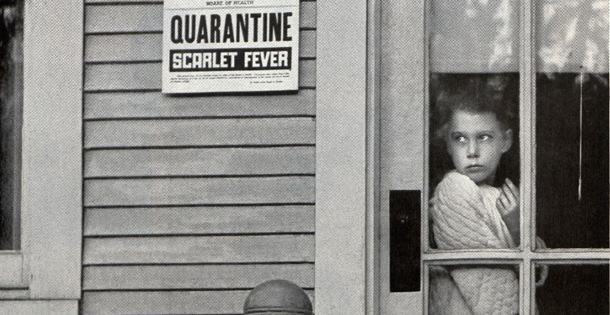Diseases such as smallpox, typhoid, and polio used kill or injure thousands of people every year. These ads from drug and insurance companies encouraged people to make use of the new vaccines and antibiotics.
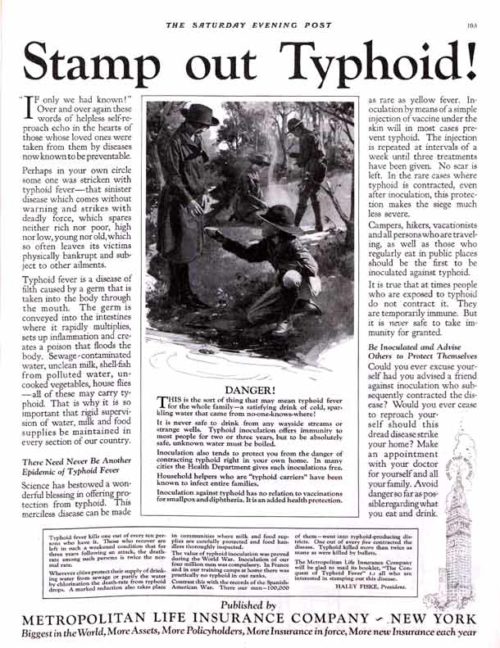
May 30, 1925
(Click to Enlarge)
Typhoid is a bacterial infection caused by consuming contaminated food or water. Two U.S. presidents — William Henry Harrison and Zachary Taylor — died of the disease. During the Civil War, 80,000 Union soldiers died of typhoid or dysentery, more than died in battle. After a vaccine was developed in the late 1800s, the entire U.S. Army was vaccinated, eliminating typhoid as a significant cause of death during World War I. Due to improved sanitation, typhoid is no longer a threat in the U.S., and people are advised to get vaccinated only if traveling to places where typhoid is common.
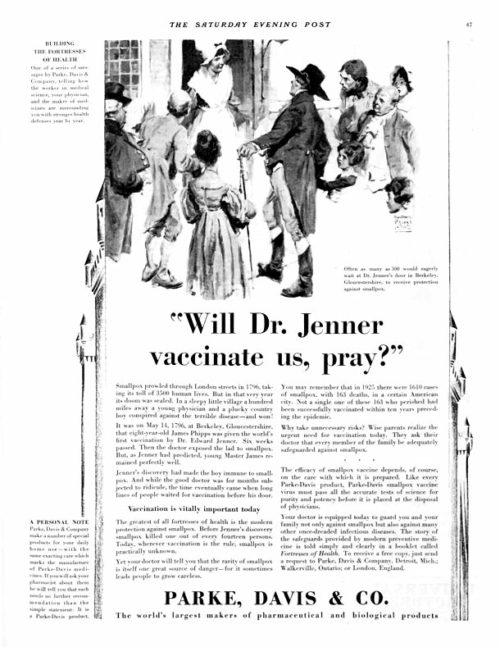
November 10, 1928
(Click to Enlarge)
Smallpox was the first vaccine to be developed, in 1796, and the disease was already on its way to being eliminated when this ad appeared in 1928. The World Health Organization led a massive campaign to eradicate smallpox in the 1960s, and it was wiped out worldwide by 1977. Routine vaccination in the U.S. ended in 1972, and now smallpox exists only in laboratories.
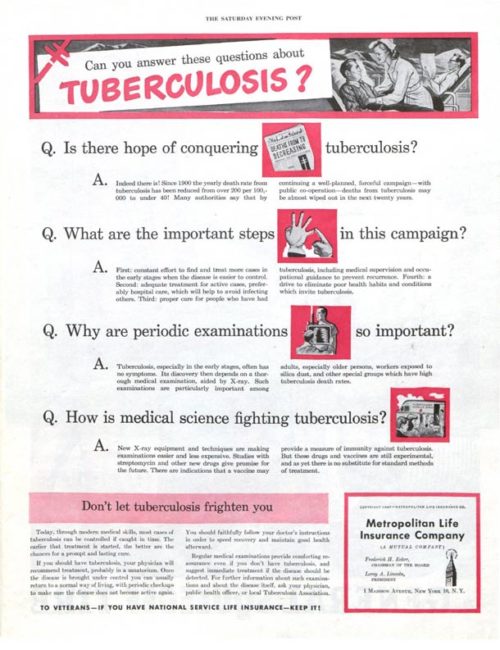
April 12, 1947
(Click to Enlarge)
The tuberculosis vaccine is the most widely used vaccine in the world; more than 90% of children are vaccinated. Unfortunately, tuberculosis continues to be a significant global problem. One-third of the world’s population is thought to be infected with latent or active tuberculosis. In 2016, there were 10 million cases of active infections and 1.3 million deaths. TB can be treated with antibiotics, but antibiotic reisistance is a growing problem.
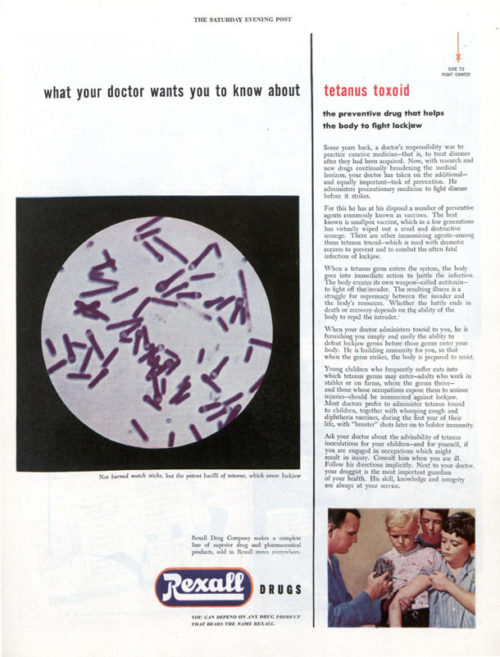
April 3, 1948
(Click to Enlarge)
Many remember being terrified of stepping on a rusty nail and getting “lockjaw,” the more colorful name for tetanus. Tetanus is an infection caused by bacteria found in soil, manure, and dust. The bacteria can cause severe muscle spasms, which usually start in the jaw. Because of the extreme potency of the tetanospasmin toxin, recovery from naturally acquired tetanus does not usually result in immunity. Luckily for barefooted explorers, there is a vaccine.

August 20, 1955
(Click to Enlarge)
This 1955 ad encourages parents to talk to their doctor about immunizations for smallpox, whooping cough, diptheria, and tetanus, also noting that “medical authorities now advise that vaccine lessens your child’s chance of getting polio.” The list of available vaccines has grown quite a bit longer since 1955; since then, immunizations have been developed for measles (1963), mumps (1967), rubella (1969), meningitis (1974), pneumonia (1977), yellow fever (1978), rabies (1980), hepatitis B (1981), Hib (1985), chicken pox (1995), shingles (2006), and HPV (2006).

March 12, 1960
(Click to Enlarge)
Throughout the 20th century, Metropolitan Life ran a series of ads encouraging parents to vaccinate their children against polio, diptheria, whooping cough, and other childhood diseases. When this ad ran in 1960, the polio vaccine had only been in use for five years, but most people were eager to vaccinate: the 1952 polio epidemic was the worst outbreak in the nation’s history. Of the nearly 58,000 cases reported that year, 3,145 people died and 21,269 were left with mild to disabling paralysis.
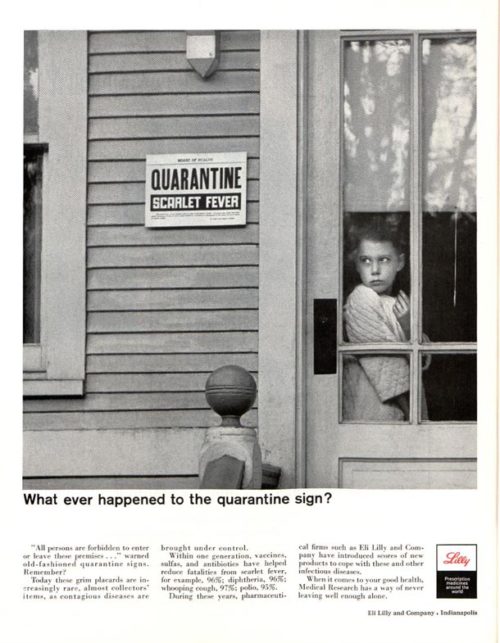
November 16, 1963
(Click to Enlarge)
Scarlet Fever is an infection caused by the same bacteria that causes strep throat. Before the nineteenth century, it was considered a fairly bengin childhood disease, but it became more deadly in the 1800s. According to http://aetiologyblog.com, childhood fatality rates reached 30% in the U.S. and U.K. from 1840 to 1883. Children and their familities were quarantined for weeks to reduce the spread of the disease. Then, just as mysteriously, death rates declined. Between its reduced virulence and the introduction of antibiotics, scarlet fever became much less of a threat.

October 17, 1964
(Click to Enlarge)
The near-eradication of polio is one of medicine’s biggest success stories. Polio was officially eliminated from the U.S. in 1991. As of 2016, there were only 42 cases of polio in the world, down from 350,000 in 1988. Polio remains a stubborn problem in a handful of countries, where distribution of the vaccine has been thwarted because of war, remoteness, or suspicion.
Become a Saturday Evening Post member and enjoy unlimited access. Subscribe now
